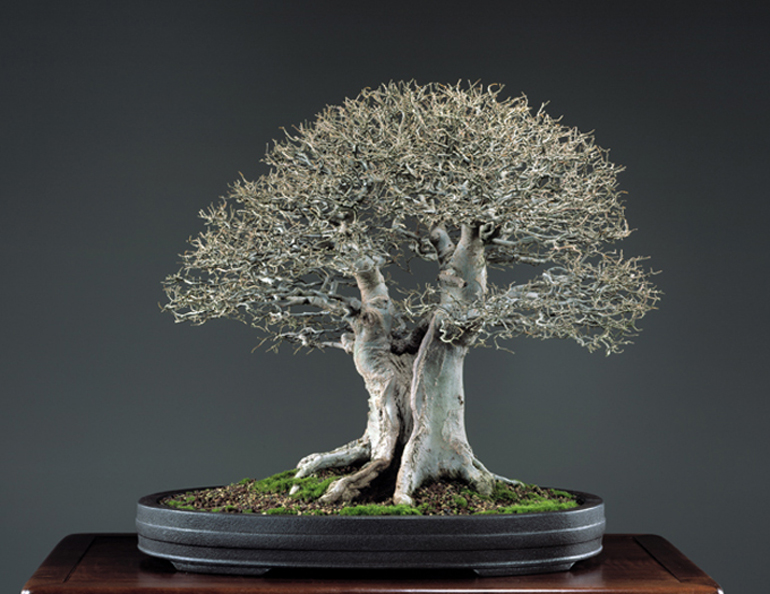 This magnificent old Chinese hackberry (Celtis sinensis) is a tree that I've had the honor of seeing up close and personal. It lives at the Pacific Bonsai Museum in Washington State. A not-to-miss experience if you're ever out that way. Though the distinctive split trunk needs no comment, you might also notice the highly developed ramification (fine branching). The tree was donated to the Museum by Ben Oki.
This magnificent old Chinese hackberry (Celtis sinensis) is a tree that I've had the honor of seeing up close and personal. It lives at the Pacific Bonsai Museum in Washington State. A not-to-miss experience if you're ever out that way. Though the distinctive split trunk needs no comment, you might also notice the highly developed ramification (fine branching). The tree was donated to the Museum by Ben Oki.
It has been almost two years now since we posted this glowing introduction to Dave DeGroot’s indispensable Principles of Bonsai Design. With the slow inexorable erosion of print media in this digital age, we never thought we would see another bonsai book this popular. But popular it is. And for very good reason. It’s simply the most thorough and clear exposition of bonsai design you’ll find.
Continued below…

almost all of our books are already discounted
this means double discounts for you
Sale ends tonight, Friday, April 14th at 11:59pm EDT
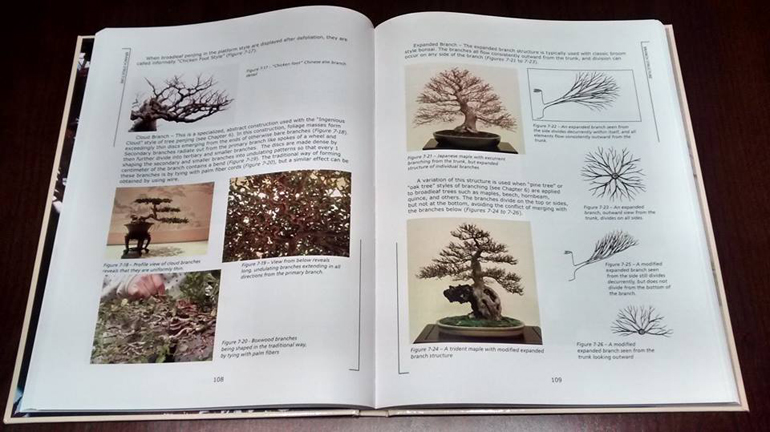
Principles of Bonsai Design. Here's a spread out of Dave's chapter on branch structure.
"This book is an absolute must for any serious bonsai grower. I heartily recommend it." Jerry Meislik, author of Ficus, the Exotic Bonsai.
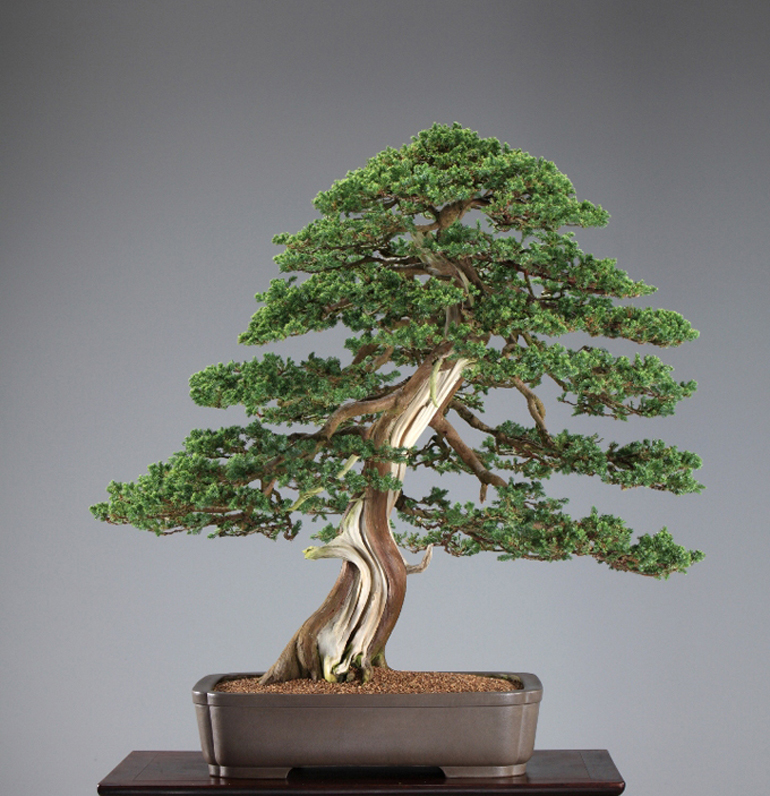 This Formosan juniper (Juniperus formosana) by Mr. Kuo An Lee is from Taiwan. Amy Liang Chang donated it to the Pacific Bonsai Museum.
Dave DeGroot wrote: "This Chinese juniper was nursery grown and trained in Taipei, Taiwan. The basic shape was created by bending the juvenile tree around a bamboo stake. Field growing enlarged the trunk, which was then topped to obtain the correct height. The illusion of great age was supported by stripping the bark from certain branches and parts of the trunk. Carved grooves and channels in the stripped trunk suggest a long period of weathering and decay, further enhancing the illusion of age and powerful natural forces.
The artist has created a feeling of gracefulness with the gently curving, slanted trunk, while the dropped branch on the right adds tension and interest by making the tree just slightly unbalanced."
This Formosan juniper (Juniperus formosana) by Mr. Kuo An Lee is from Taiwan. Amy Liang Chang donated it to the Pacific Bonsai Museum.
Dave DeGroot wrote: "This Chinese juniper was nursery grown and trained in Taipei, Taiwan. The basic shape was created by bending the juvenile tree around a bamboo stake. Field growing enlarged the trunk, which was then topped to obtain the correct height. The illusion of great age was supported by stripping the bark from certain branches and parts of the trunk. Carved grooves and channels in the stripped trunk suggest a long period of weathering and decay, further enhancing the illusion of age and powerful natural forces.
The artist has created a feeling of gracefulness with the gently curving, slanted trunk, while the dropped branch on the right adds tension and interest by making the tree just slightly unbalanced."
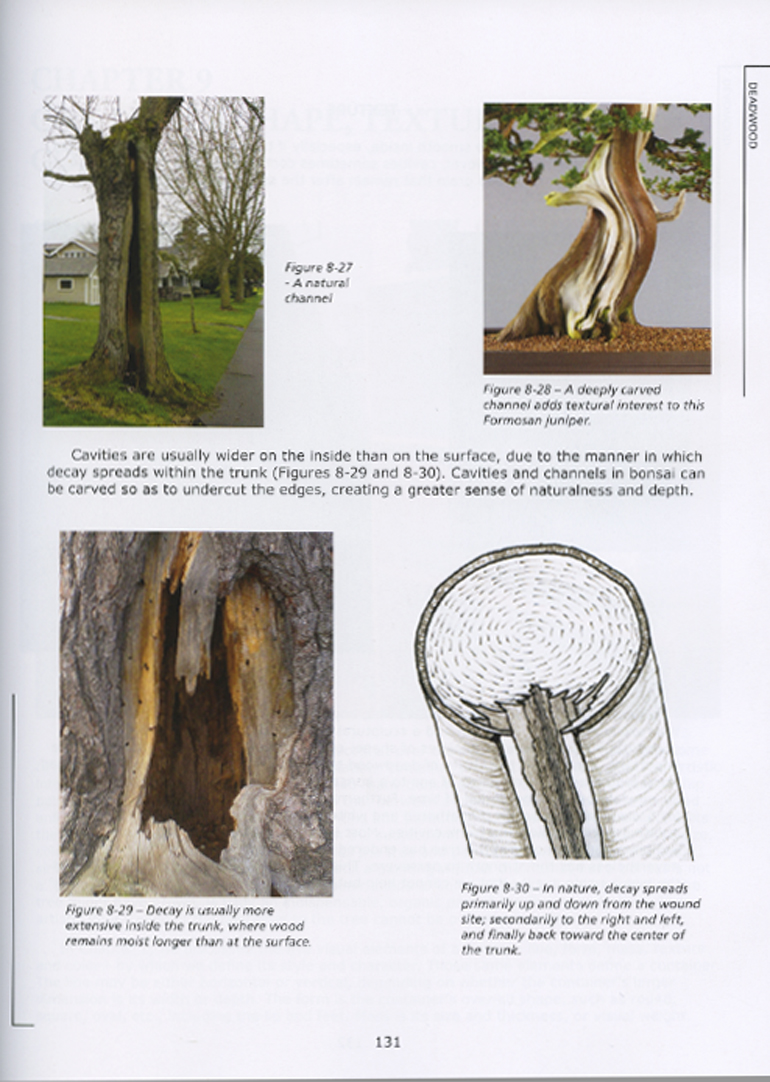 You might notice this page from Dave's Principles of Bonsai Design includes the trunk of the tree just above.
You might notice this page from Dave's Principles of Bonsai Design includes the trunk of the tree just above.
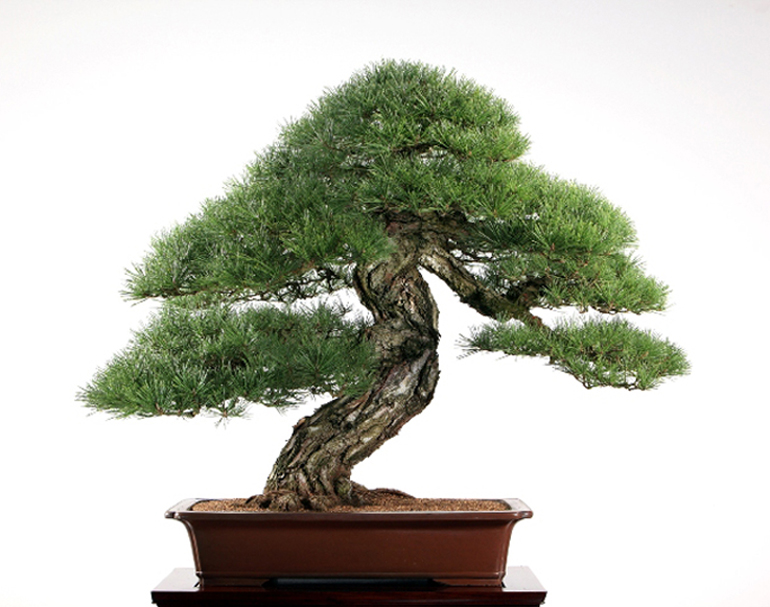 Amy Liang Chang (you might know her as just Amy Liang) of Taiwan is the artist and donor of this gnarly old (over 400 years!) Japanese black pine (Pinus thunbergii).
Dave wrote this about this magnificent old tree: "The black pine is a coastal tree of southern Japan, strong, vigorous, long lived and possessed of many attractive qualities. For all the above reasons, it is known as “The King of Bonsai."
This tree was quite tall when it was collected. In order to create a bonsai of pleasing proportions, the entire upper trunk was cut off, leaving only the lower trunk and the first four branches. Taipei bonsai artist Amy Liang Chang purchased the tree from a Japanese nurseryman in 1971 and styled into in its present form. The tree was totally cleansed of soil to permit its importation to the U.S. in 1989. Although badly stressed by that experience, it lived up to its reputation as a strong, vigorous tree and recovered fully."
Amy Liang Chang (you might know her as just Amy Liang) of Taiwan is the artist and donor of this gnarly old (over 400 years!) Japanese black pine (Pinus thunbergii).
Dave wrote this about this magnificent old tree: "The black pine is a coastal tree of southern Japan, strong, vigorous, long lived and possessed of many attractive qualities. For all the above reasons, it is known as “The King of Bonsai."
This tree was quite tall when it was collected. In order to create a bonsai of pleasing proportions, the entire upper trunk was cut off, leaving only the lower trunk and the first four branches. Taipei bonsai artist Amy Liang Chang purchased the tree from a Japanese nurseryman in 1971 and styled into in its present form. The tree was totally cleansed of soil to permit its importation to the U.S. in 1989. Although badly stressed by that experience, it lived up to its reputation as a strong, vigorous tree and recovered fully."
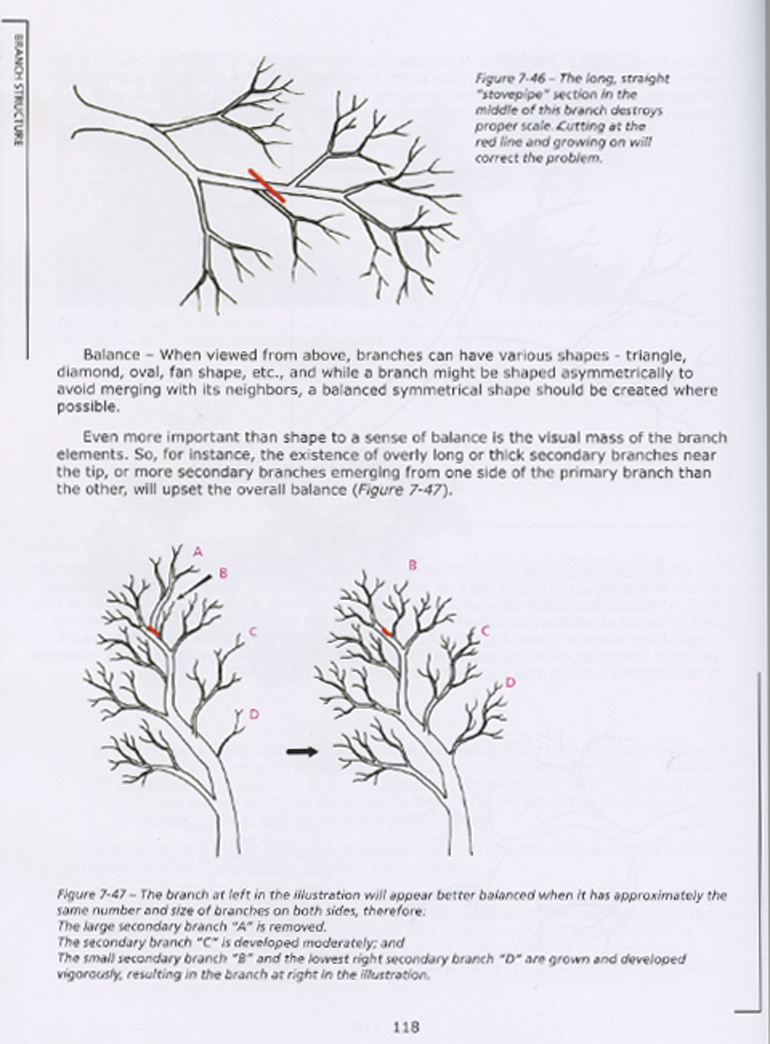
One more page from Principles of Bonsai Design. Just to whet your appetite.
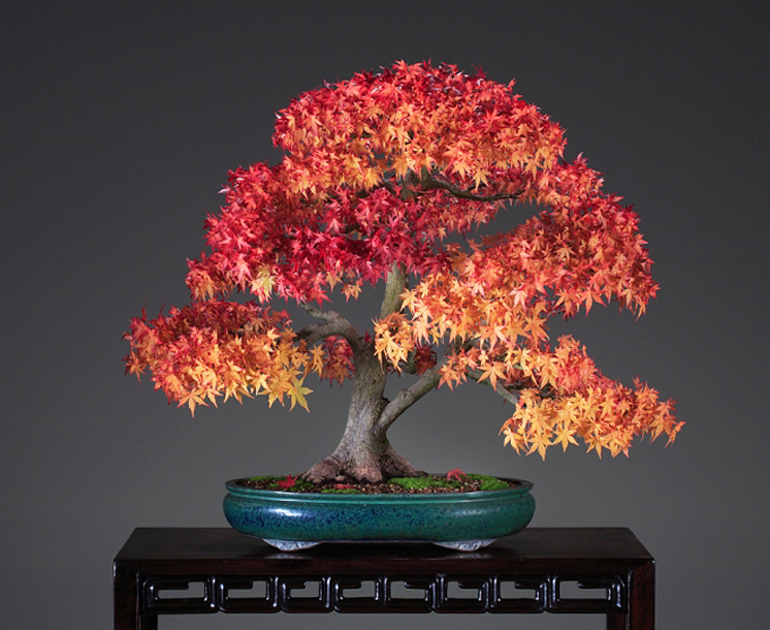 The artist and donor was of this brilliant Japanese maple was George Gray of Dallas, Texas. It's date of origin is 1963 and it has been a bonsai since 1968.
Here's what Dave DeGroot wrote about this colorful tree: "Certainly, the Japanese maple is one of the most beautiful trees in any landscape, and one of the most beautiful for bonsai as well. Artist George Gray developed this maple from a cutting over a period of more than 30 years. Such a long time in a shallow pot has given the tree excellent surface roots and delicate, well-proportioned branches, so that it projects a sense of both strength and softness. A low, upswept branch on the right side of the tree adds interest by suggesting a secondary trunk.
The shape of the Tokoname-ware container is oval to harmonize with the softly rounded shape of the crown of the tree. The beautiful blue-green color of the container is a perfect foil for orange and red autumn foliage."
The artist and donor was of this brilliant Japanese maple was George Gray of Dallas, Texas. It's date of origin is 1963 and it has been a bonsai since 1968.
Here's what Dave DeGroot wrote about this colorful tree: "Certainly, the Japanese maple is one of the most beautiful trees in any landscape, and one of the most beautiful for bonsai as well. Artist George Gray developed this maple from a cutting over a period of more than 30 years. Such a long time in a shallow pot has given the tree excellent surface roots and delicate, well-proportioned branches, so that it projects a sense of both strength and softness. A low, upswept branch on the right side of the tree adds interest by suggesting a secondary trunk.
The shape of the Tokoname-ware container is oval to harmonize with the softly rounded shape of the crown of the tree. The beautiful blue-green color of the container is a perfect foil for orange and red autumn foliage."
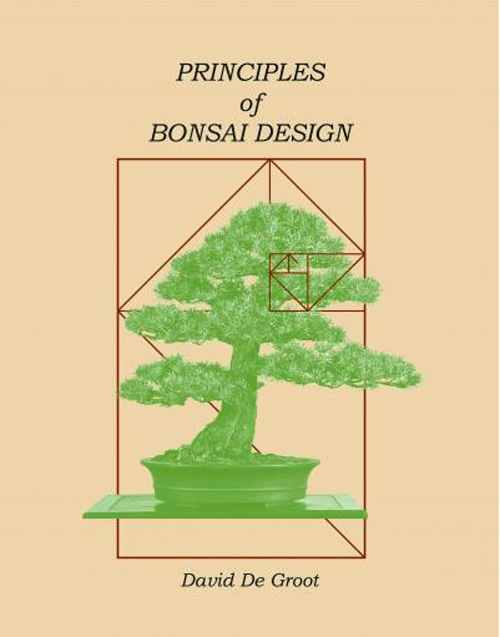
Principles of Bonsai Design. The most thorough and useful Bonsai Design book since John Naka's famous Bonsai Techniques 1 & 2, both of which no doubt greatly influenced Dave (at the risk of bonsai heresy, Dave's book may be as thorough and useful as John Naka's famous books - you can decide for yourself if you can get your hands on Techniques 1 and 2).
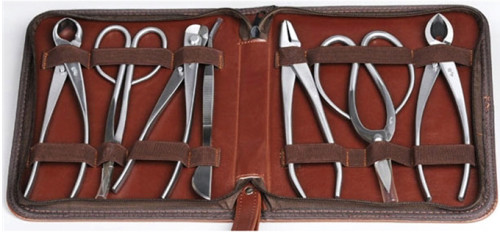
More Savings for Stone Lantern Orders
Extra 10% off orders 100.00 or more
and FREE Shipping on Continental U.S. orders 49.00 or more
but only if you choose free shipping when you check out
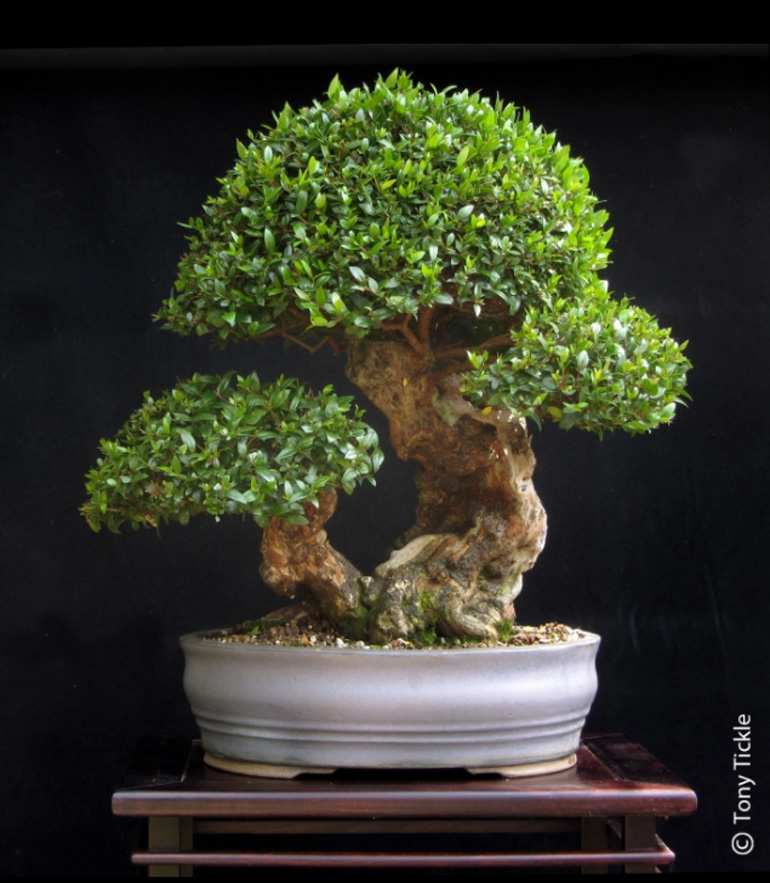
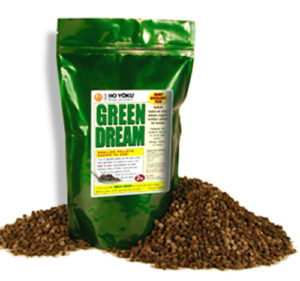 25% off All of our Bonsai Fertilizers
25% off All of our Bonsai Fertilizers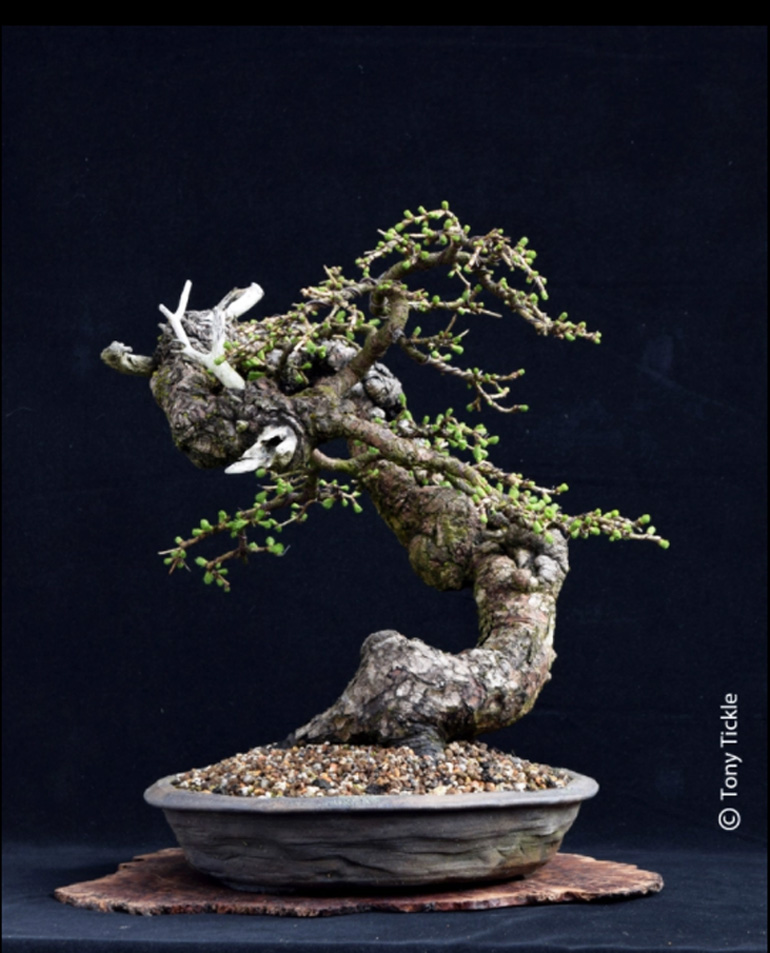
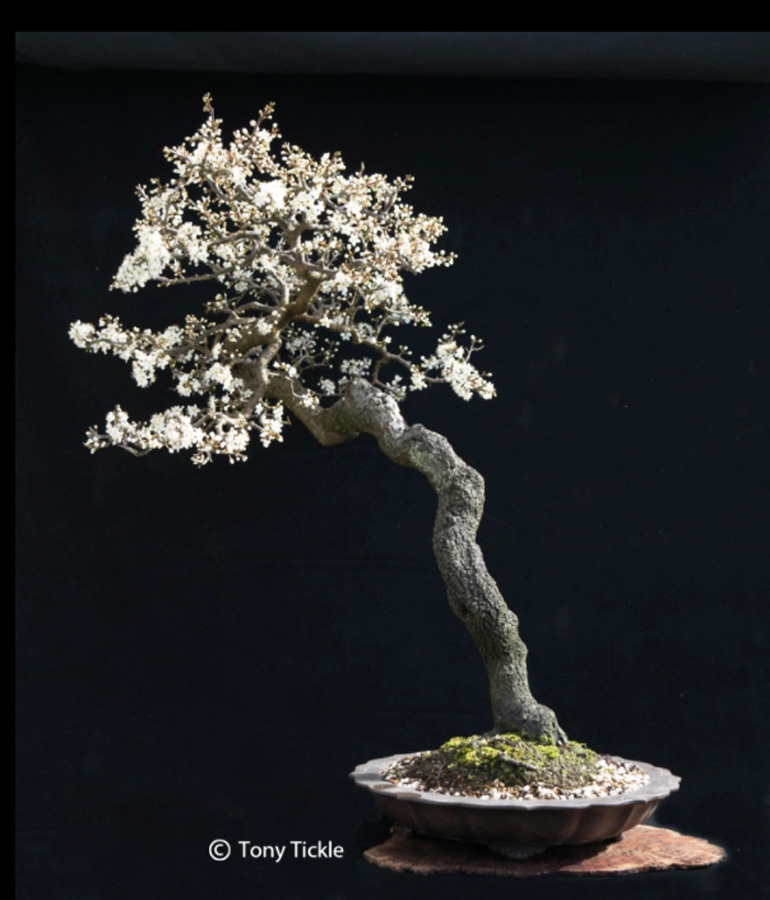
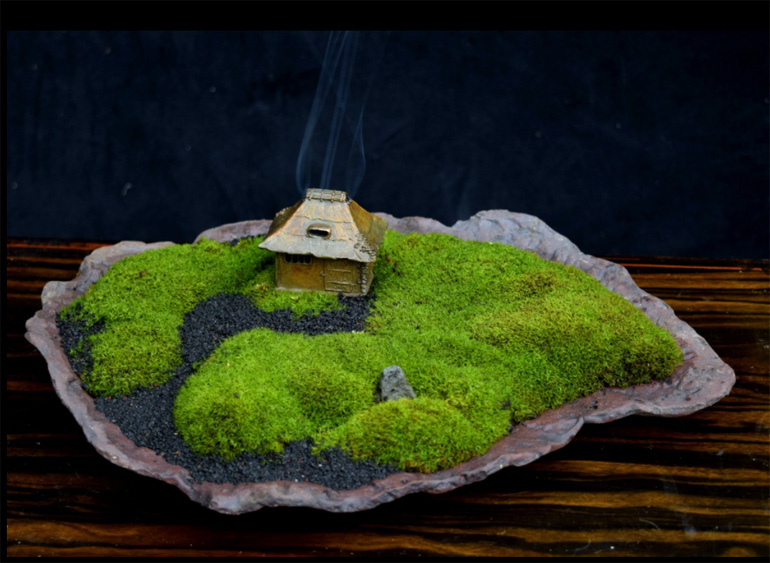
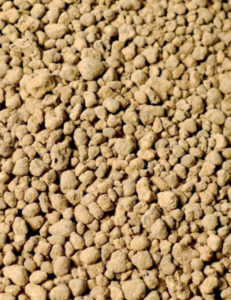 Akadama Japanese Bonsai Soil
Akadama Japanese Bonsai Soil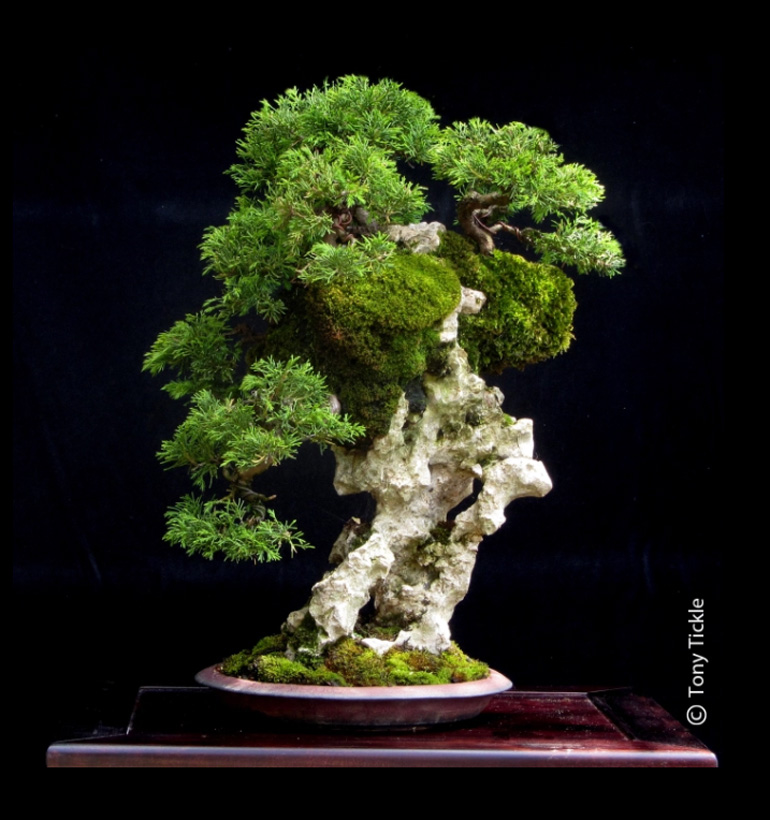
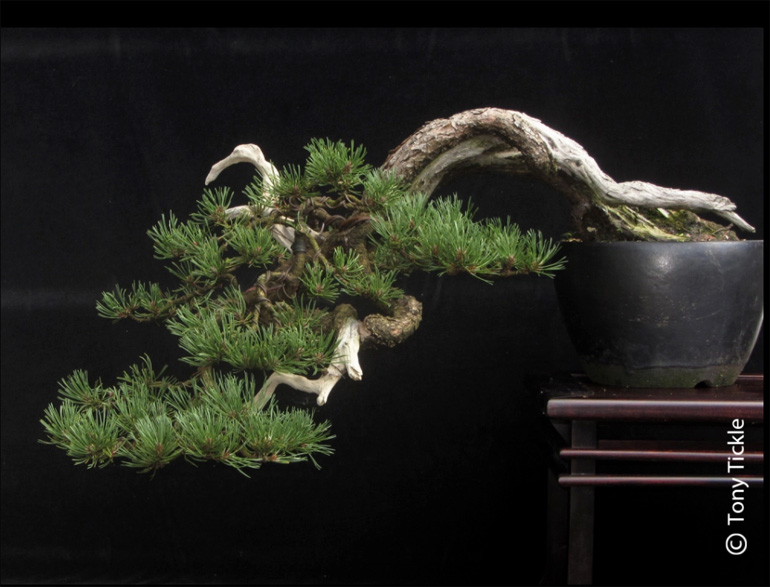
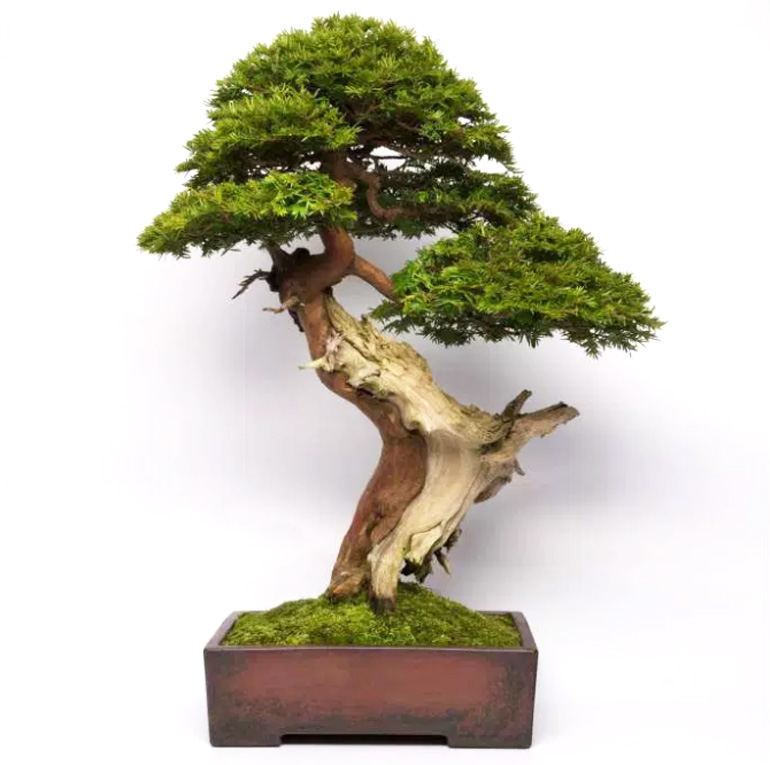
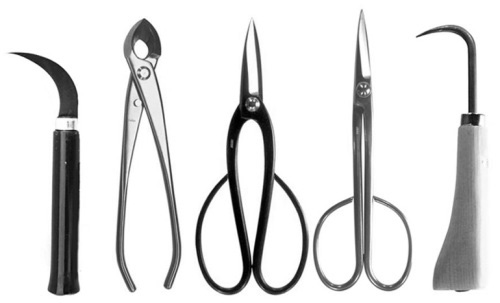
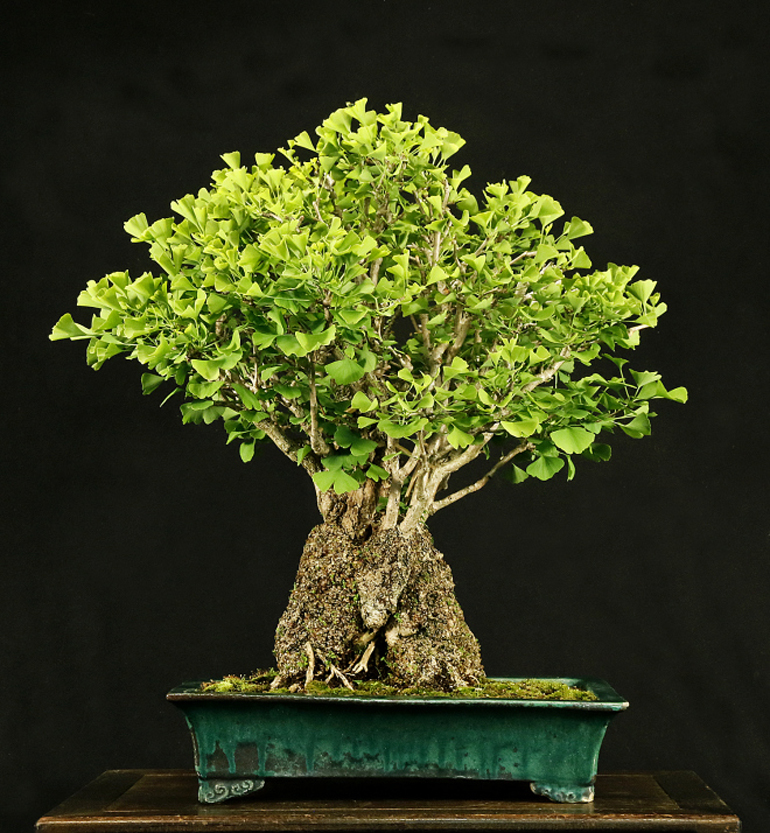
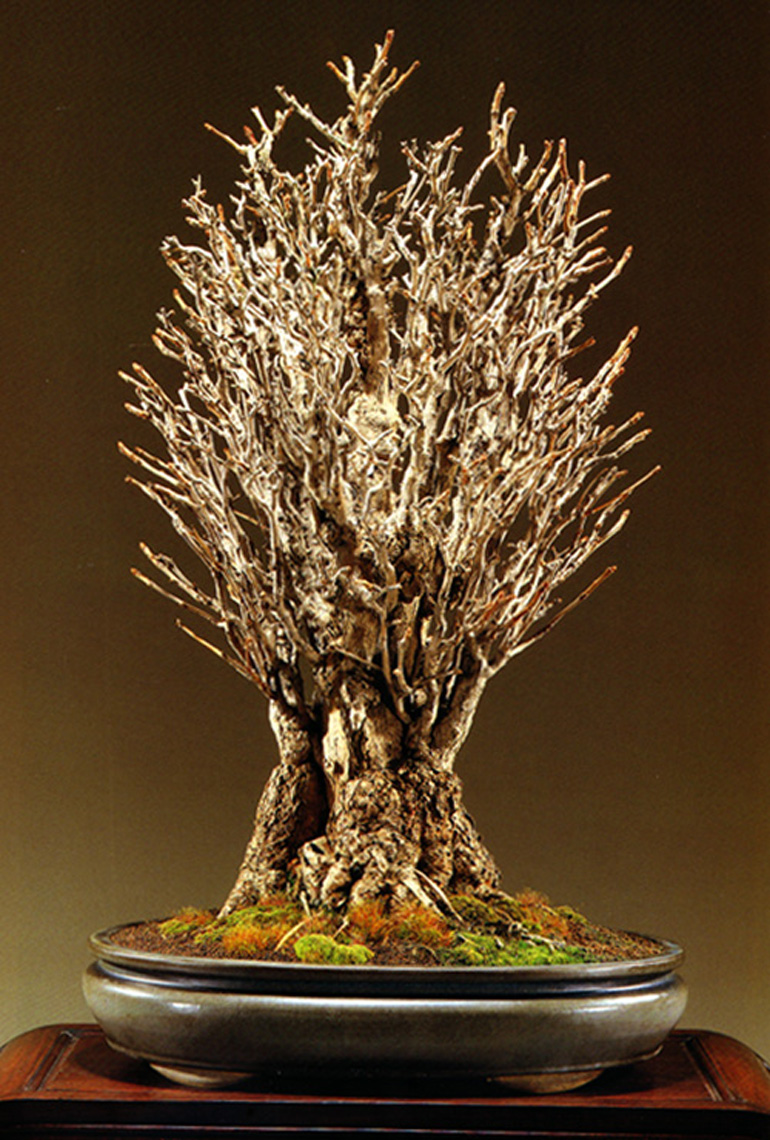 This one may be the very best Ginkgo bonsai we've ever seen. It's from Classic Bonsai of Japan (unfortunately, out of print). 50 years old, 33 inches (82cm).
This one may be the very best Ginkgo bonsai we've ever seen. It's from Classic Bonsai of Japan (unfortunately, out of print). 50 years old, 33 inches (82cm). 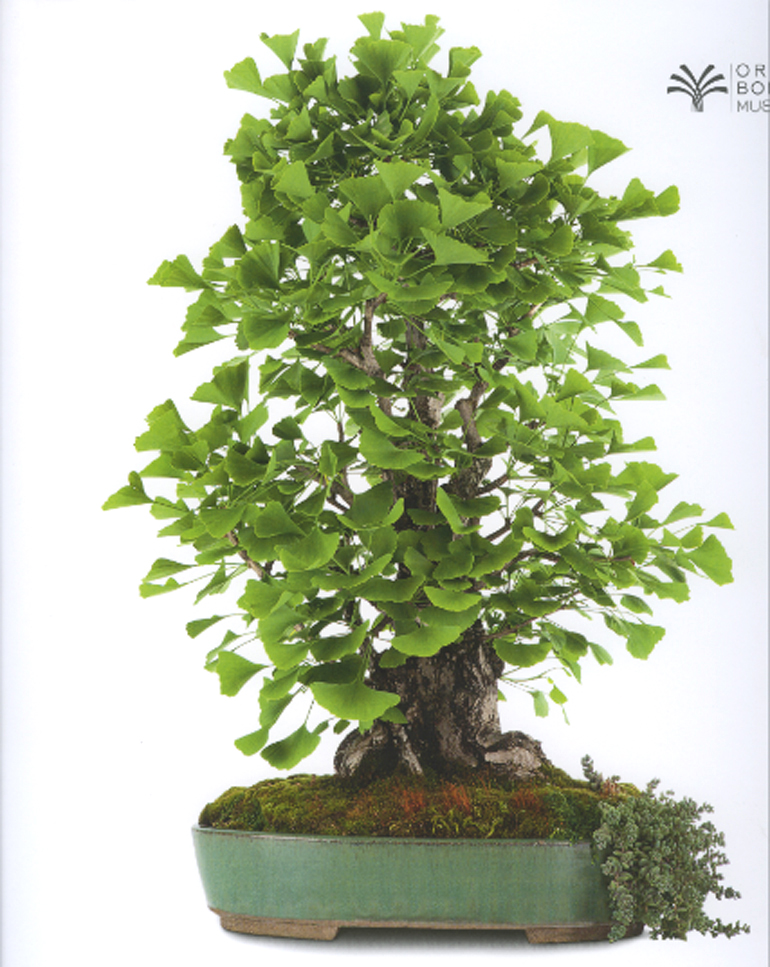
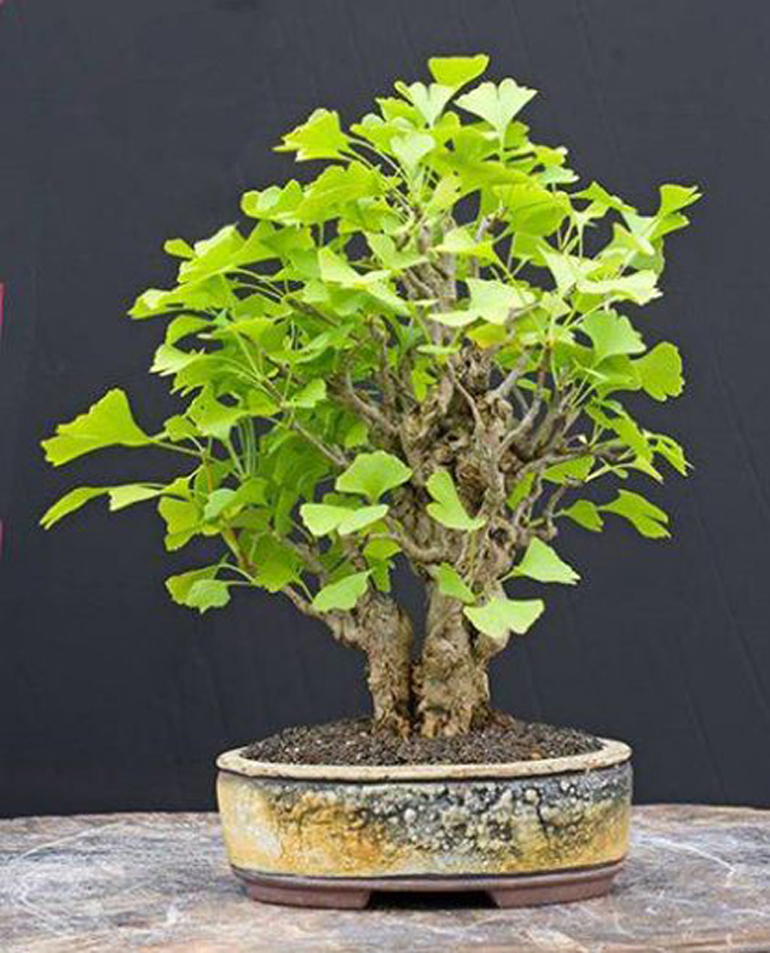 This one also deviates a bit (but not that much). It belongs to Alex Probst. The pot is by
This one also deviates a bit (but not that much). It belongs to Alex Probst. The pot is by 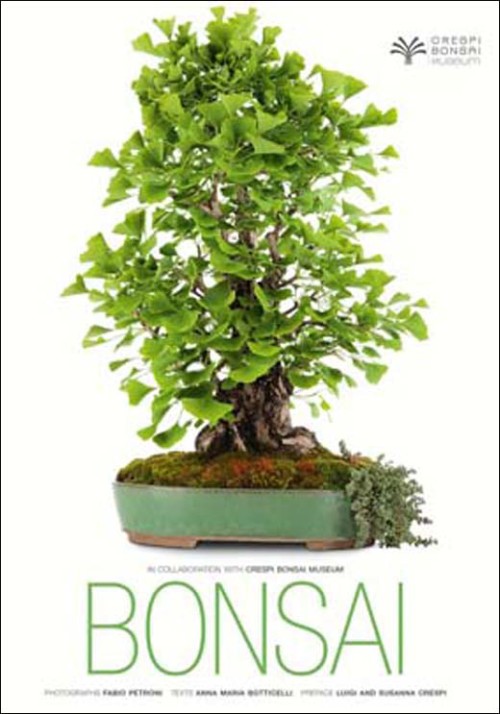
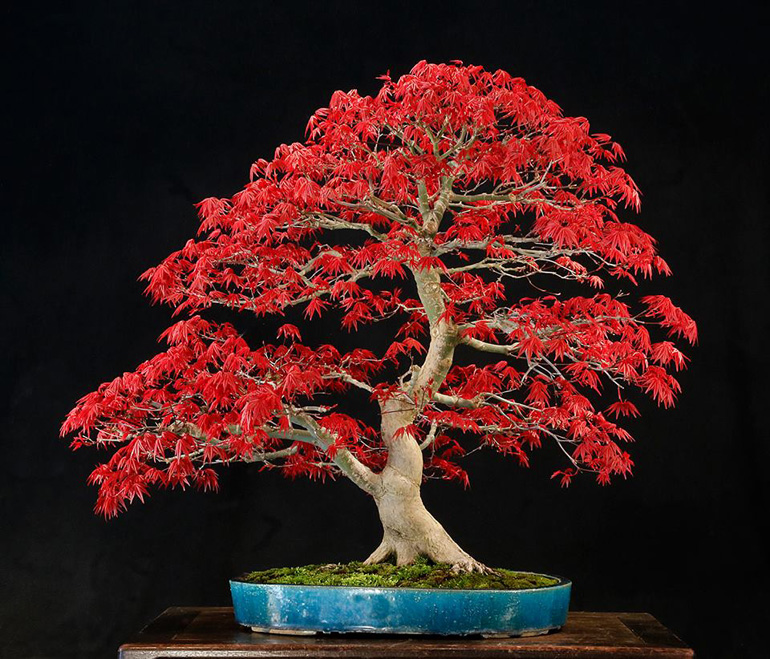
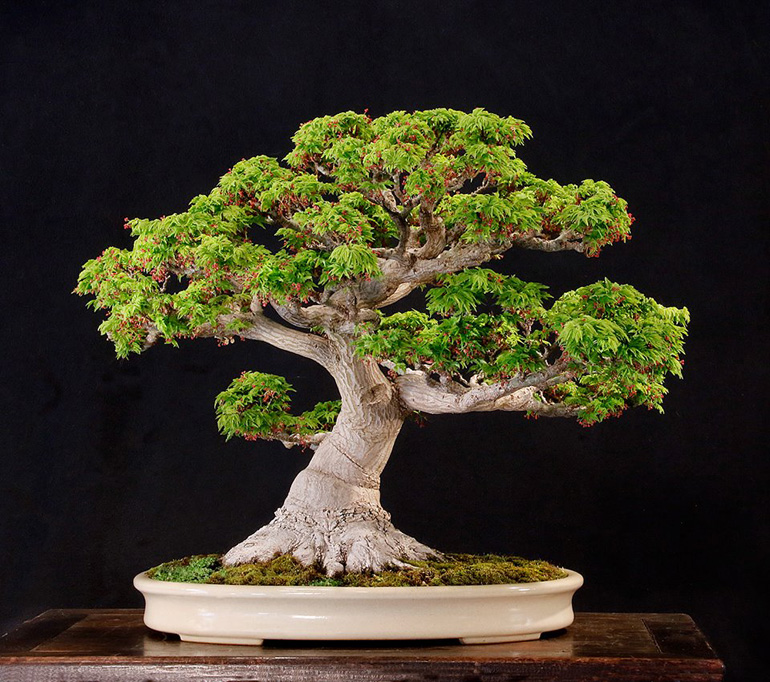
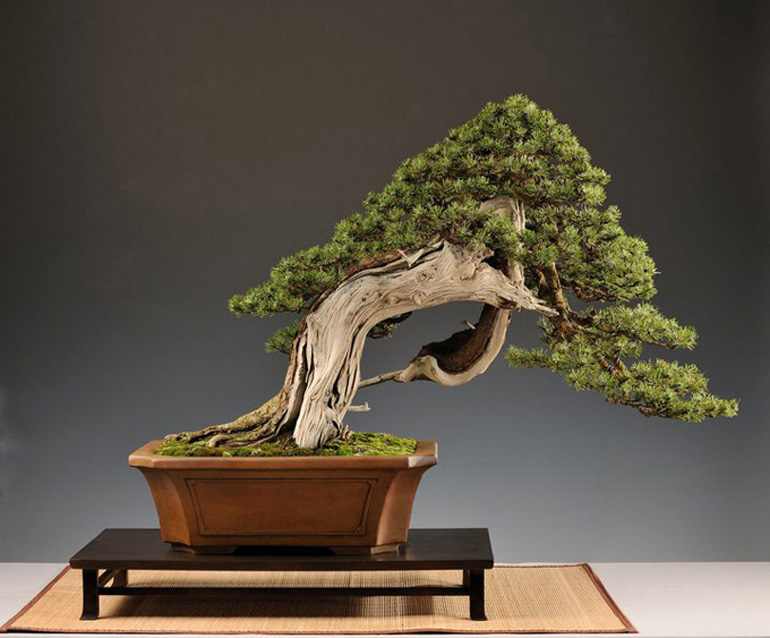 This powerful old yamadori (collected from the wild) Mugo pine would be exceptional even if it didn't have that piece of deadwood that doubles back on the trunk. With this feature it's a tree you won't easily forget. My one question has to do with balance. The long left side nebari provides an anchor, but is it enough to visually stabilize the strong lean to the right? I found this photo on
This powerful old yamadori (collected from the wild) Mugo pine would be exceptional even if it didn't have that piece of deadwood that doubles back on the trunk. With this feature it's a tree you won't easily forget. My one question has to do with balance. The long left side nebari provides an anchor, but is it enough to visually stabilize the strong lean to the right? I found this photo on 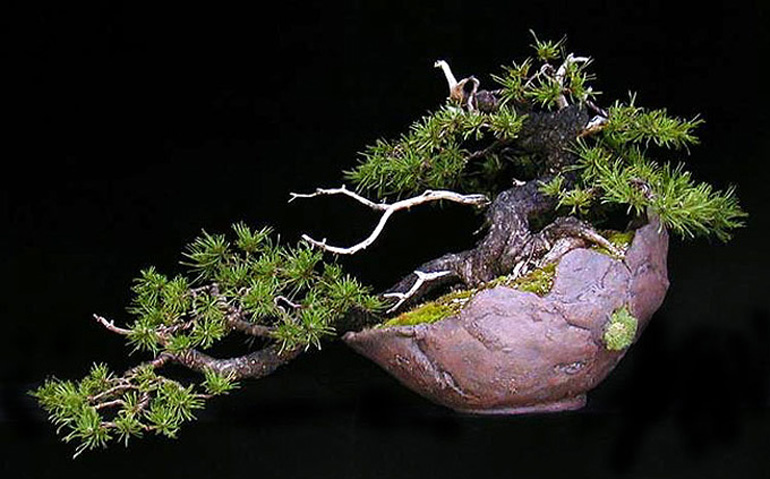 This craggy yamadori Mugo is from
This craggy yamadori Mugo is from 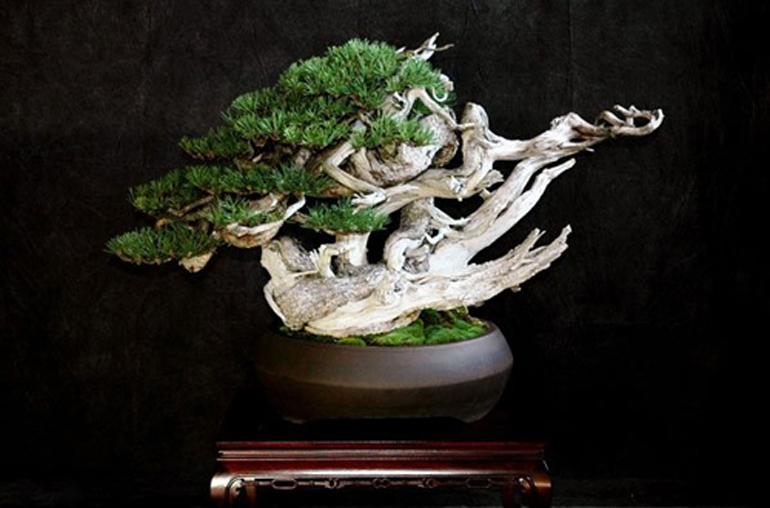
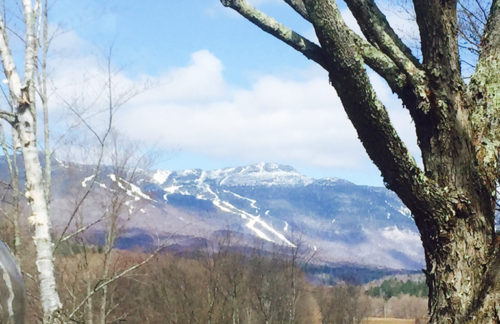 Mt Mansfield
Taken just now (cellphone) through a window
at the Hob Knob Inn in Stowe Vermont
Mt Mansfield
Taken just now (cellphone) through a window
at the Hob Knob Inn in Stowe Vermont
 We have two large incoming Wire shipments on the ocean
We have two large incoming Wire shipments on the ocean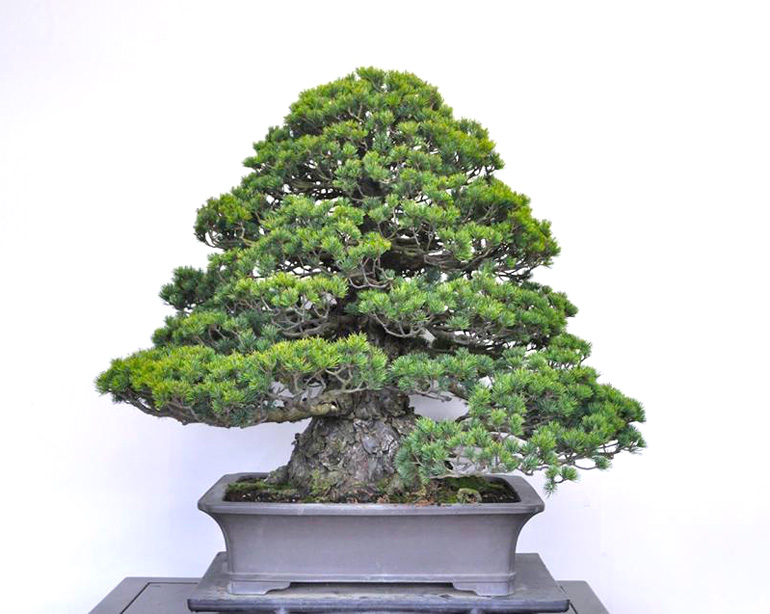
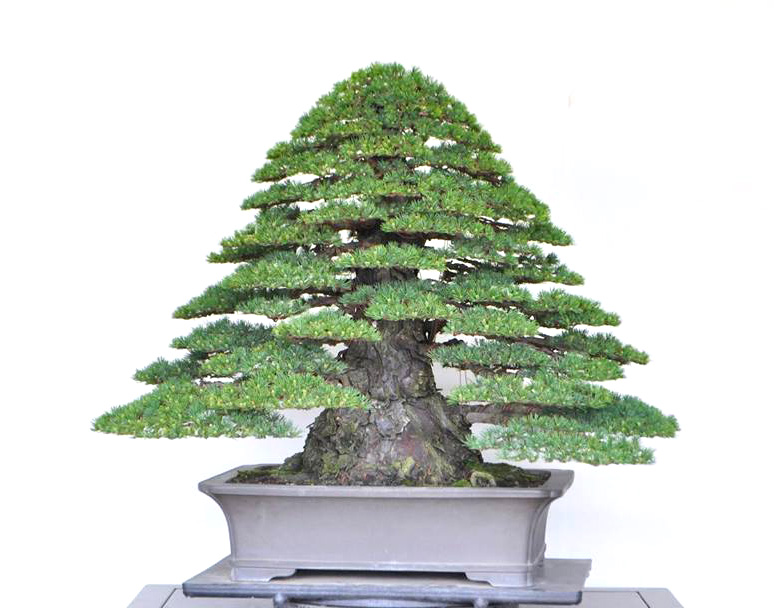
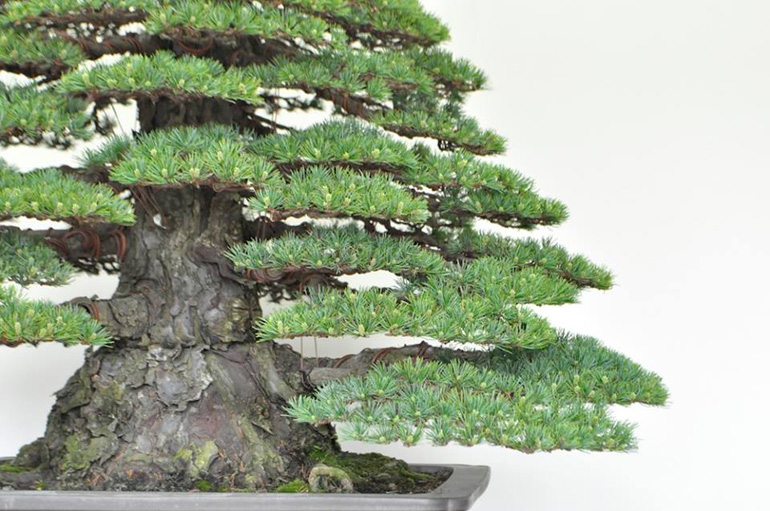
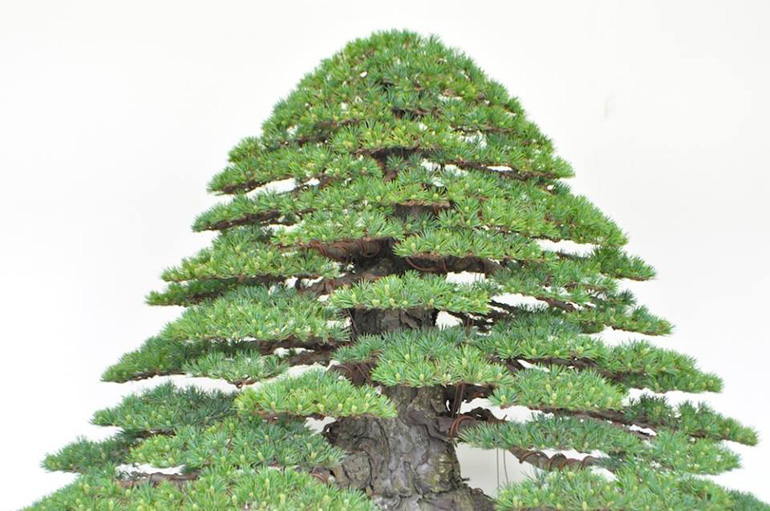
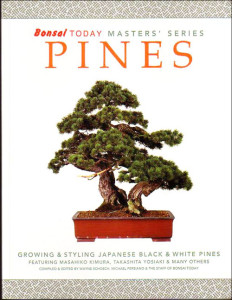
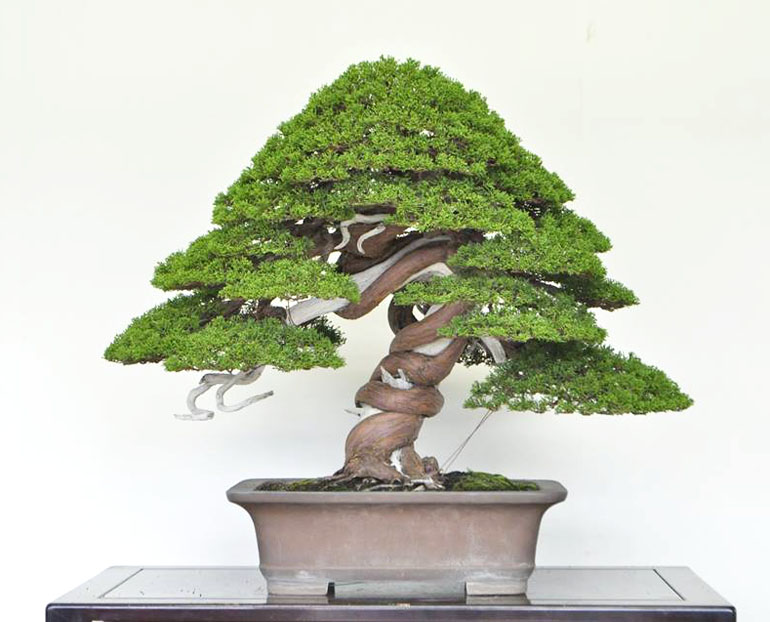
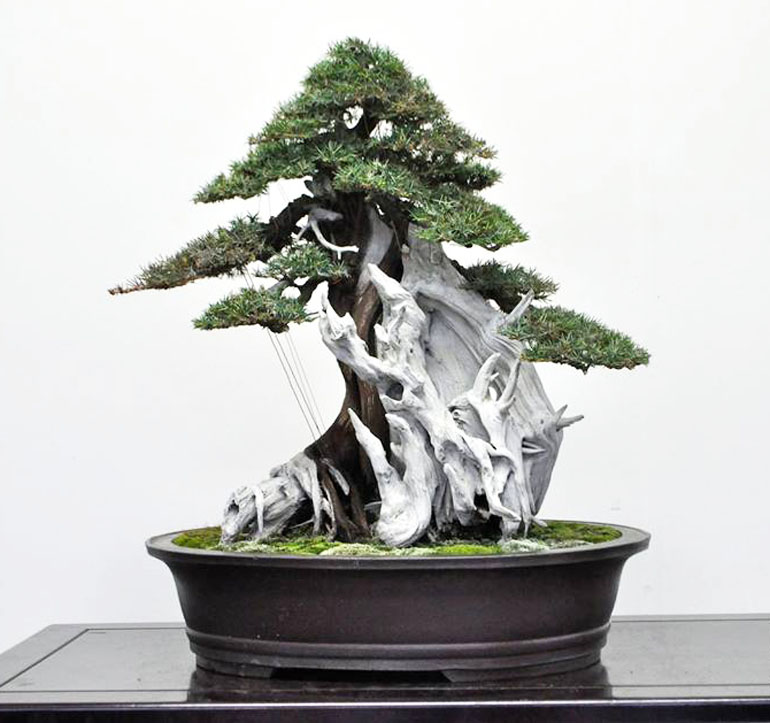

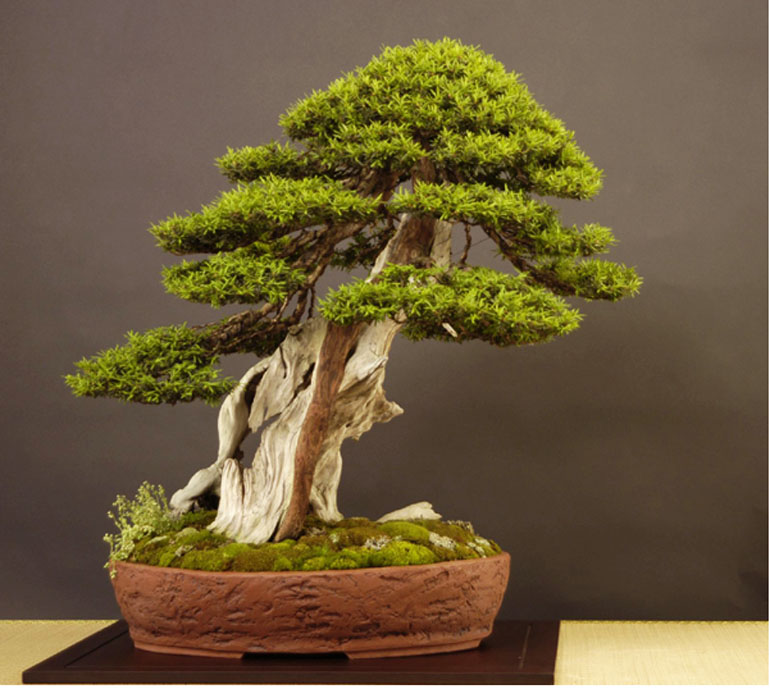
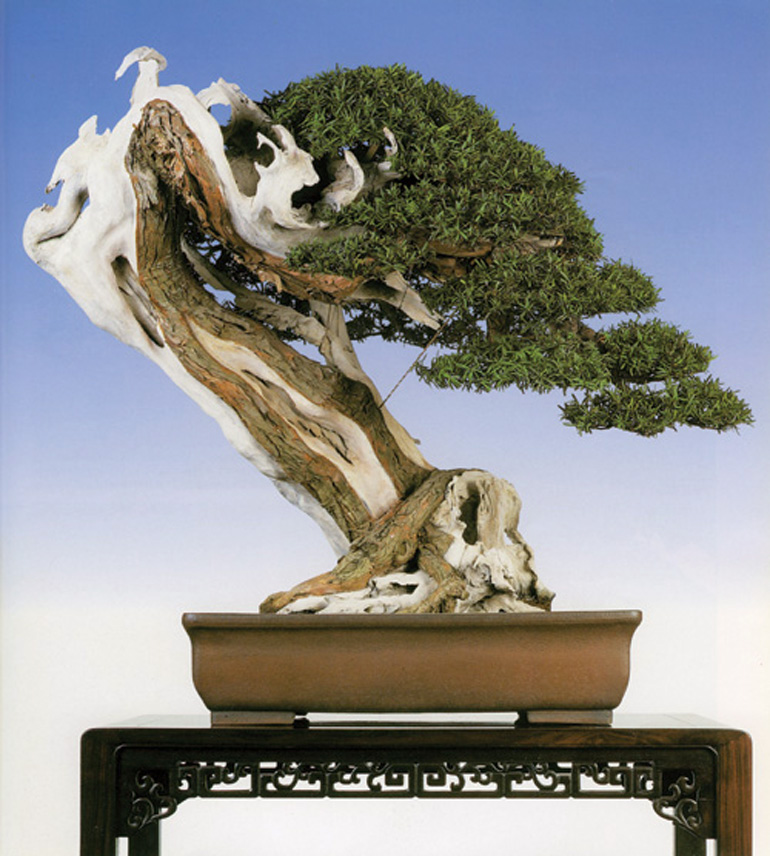 This powerful and famous Yew by Bonsai Master Masahiko Kimura is in a class by itself. It's from our book
This powerful and famous Yew by Bonsai Master Masahiko Kimura is in a class by itself. It's from our book 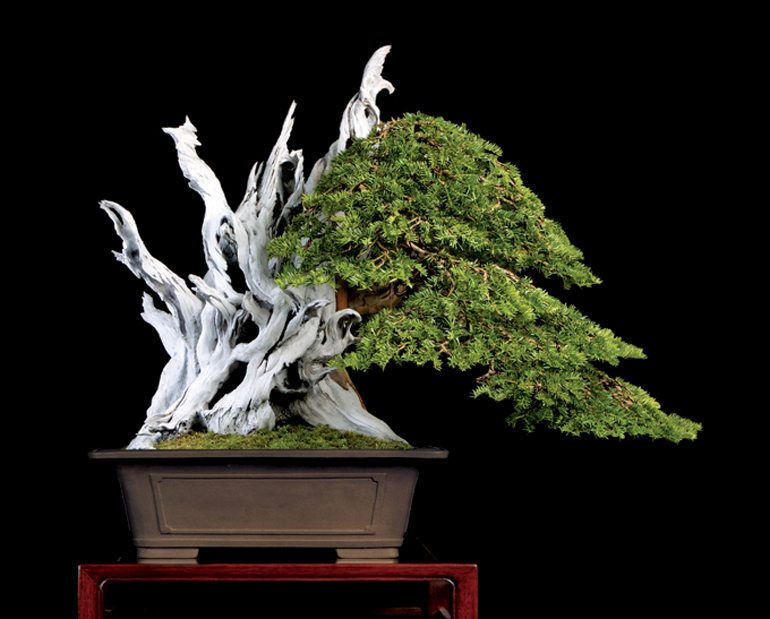 Every time I open
Every time I open 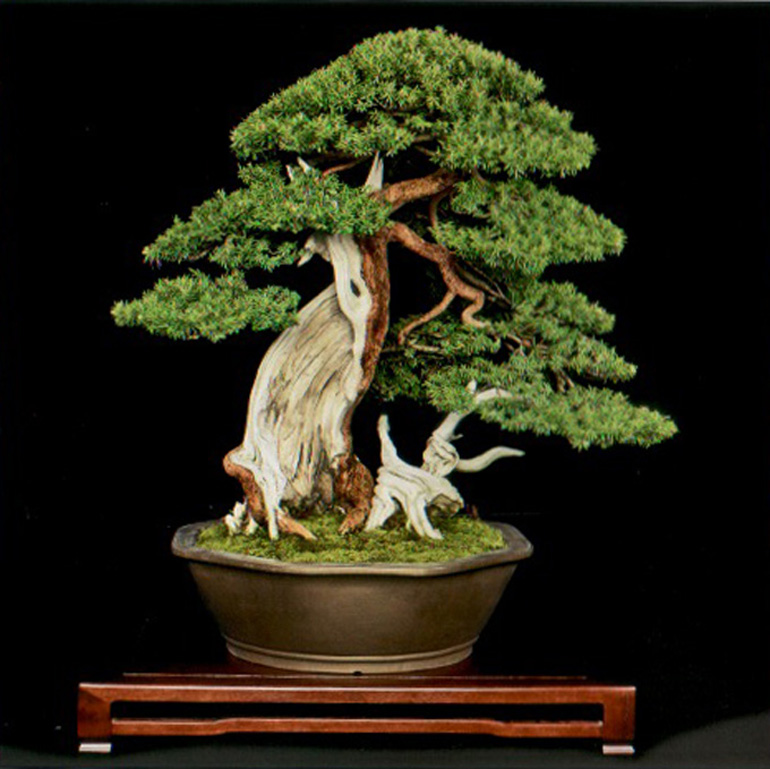 This photo from the
This photo from the 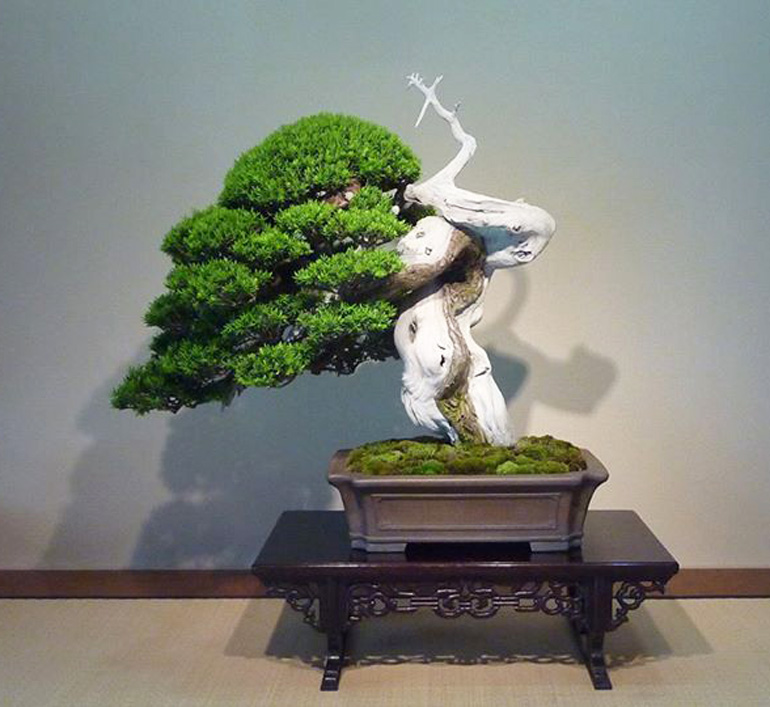 This muscular Japanese yew resides at the
This muscular Japanese yew resides at the 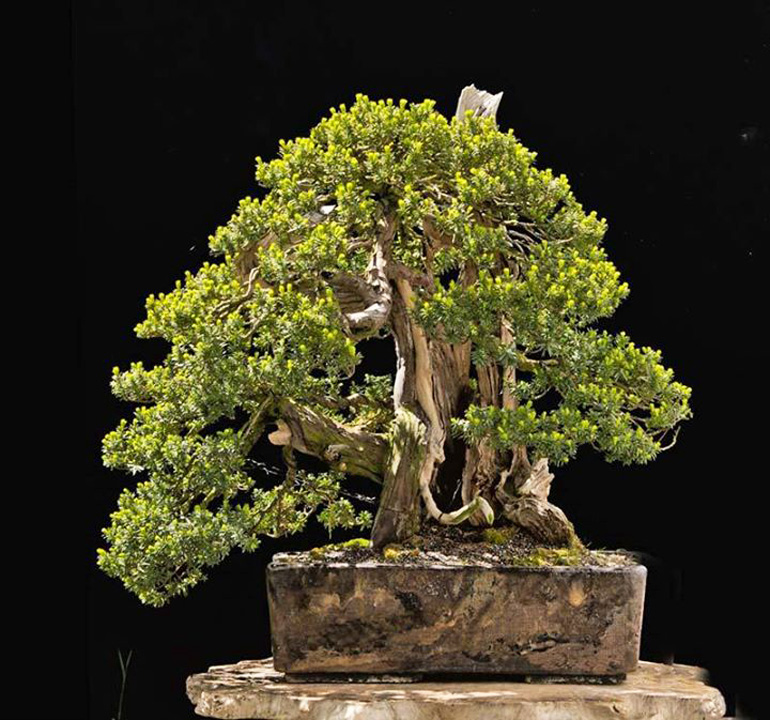 Rugged tree, rugged pot. It's hard to say if the two trunks share a single root system, but my guess is they do. Or maybe there's only one trunk with a large hole in the center. It's another Japanese yew. It belongs to
Rugged tree, rugged pot. It's hard to say if the two trunks share a single root system, but my guess is they do. Or maybe there's only one trunk with a large hole in the center. It's another Japanese yew. It belongs to 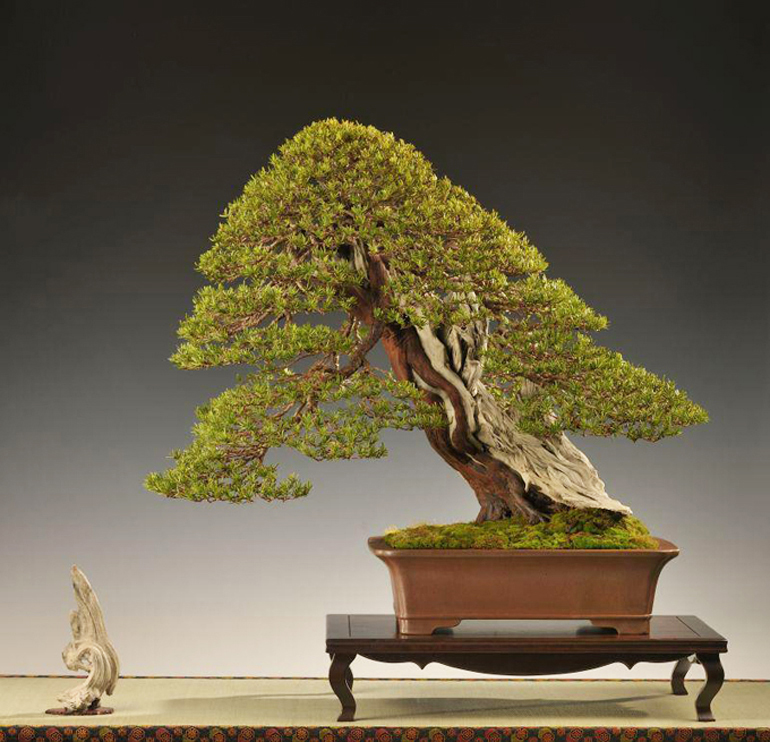 The powerful Yew with its flowing (melting) deadwood and reddish bark belongs to
The powerful Yew with its flowing (melting) deadwood and reddish bark belongs to 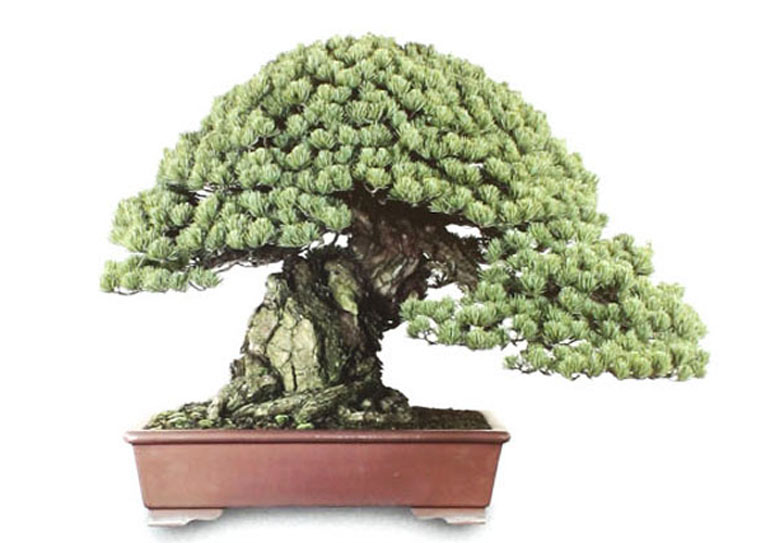

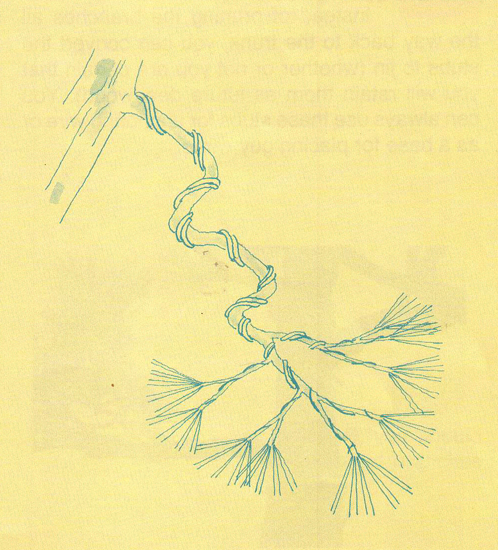

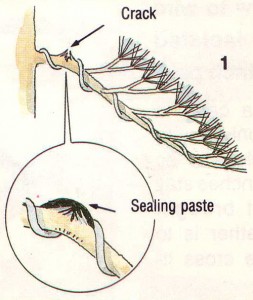 Crack! Branches sometimes crack. In fact, experienced bonsai artists sometimes intentionally crack a branch in order to bend it more than it normally would. Either way, you need to stabilized it while it heals (see below). You also need to apply
Crack! Branches sometimes crack. In fact, experienced bonsai artists sometimes intentionally crack a branch in order to bend it more than it normally would. Either way, you need to stabilized it while it heals (see below). You also need to apply 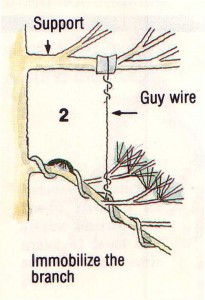 Keep it still. You can use a guy
Keep it still. You can use a guy 



 You might notice this page from Dave's
You might notice this page from Dave's 



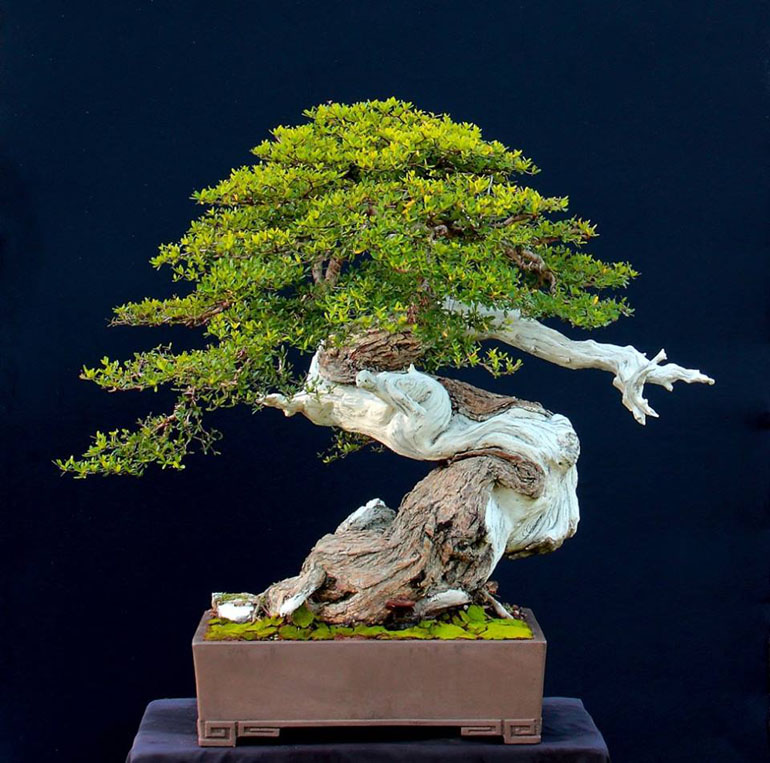
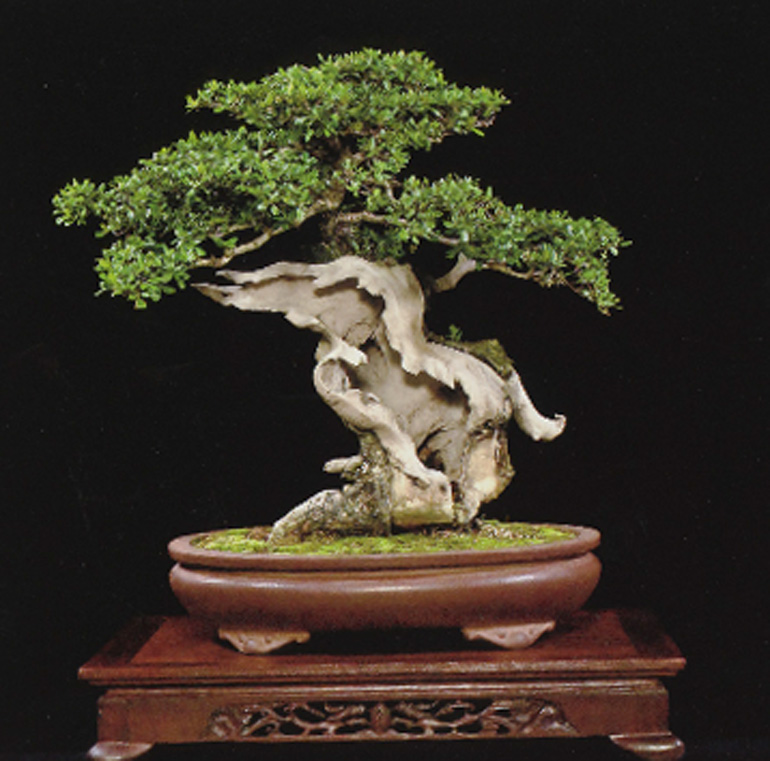 This tropical Dwarf black olive* (Bucida spinosa) with its melted wax feel and gaping trunk is a tree that only Mother Nature (and Mary Madison's skilled hands) could create. It's from the 1st U.S. National Bonsai Exhibition album (out of print, but
This tropical Dwarf black olive* (Bucida spinosa) with its melted wax feel and gaping trunk is a tree that only Mother Nature (and Mary Madison's skilled hands) could create. It's from the 1st U.S. National Bonsai Exhibition album (out of print, but 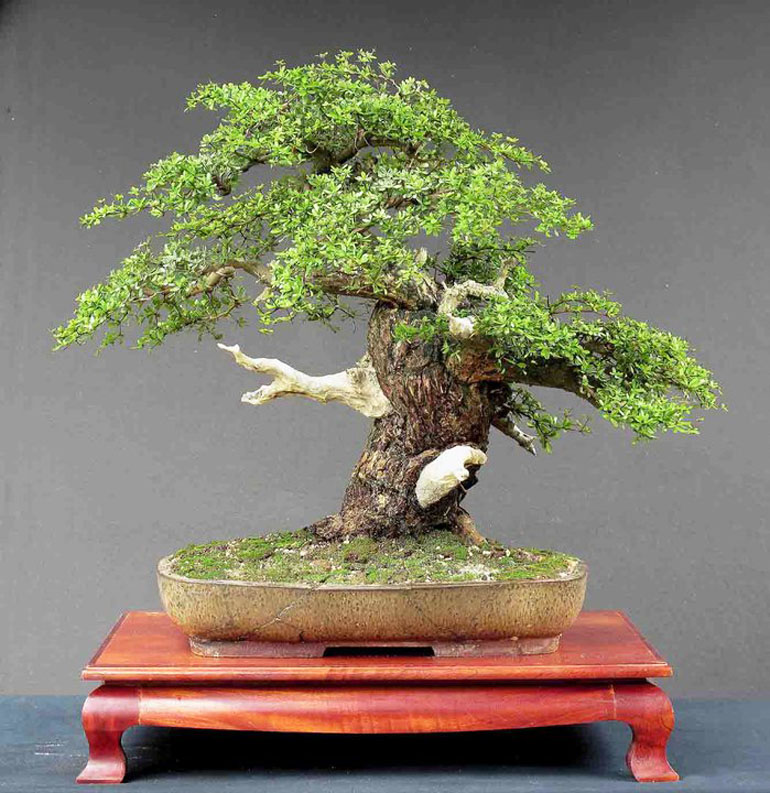 A little digging around and I came up with yet another muscular Bucida. This one was posted on
A little digging around and I came up with yet another muscular Bucida. This one was posted on 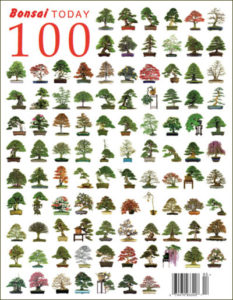 Individual issues of
Individual issues of 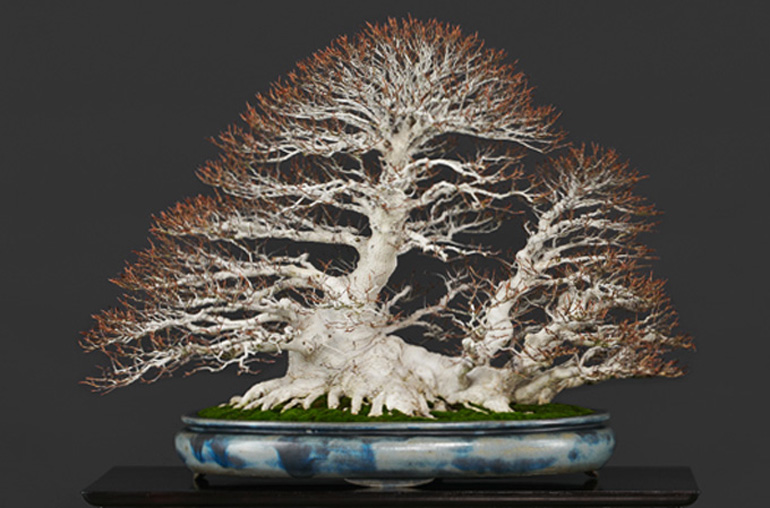 This now famous Japanese beech (Fagus crenata) received the coveted Kokufu prize at the 88th Kokufu Bonsai Exhibition. Aside from its overall magnificence, this tree provides a perfect example of what great ramification looks like. The photo is from the
This now famous Japanese beech (Fagus crenata) received the coveted Kokufu prize at the 88th Kokufu Bonsai Exhibition. Aside from its overall magnificence, this tree provides a perfect example of what great ramification looks like. The photo is from the 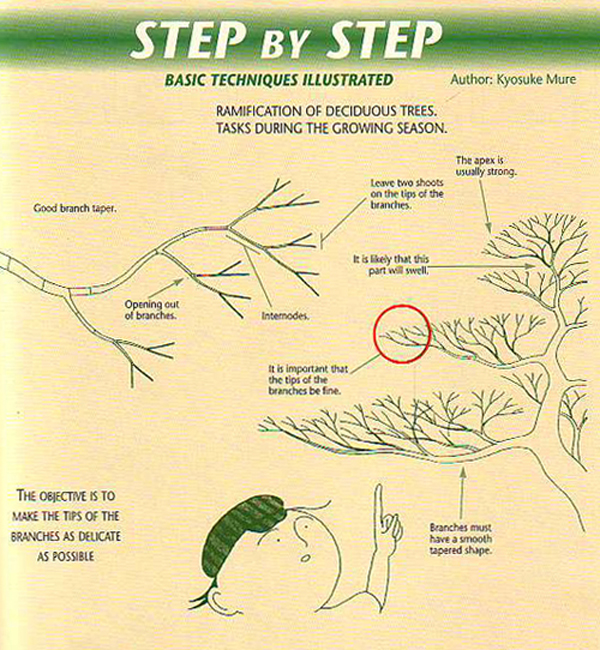
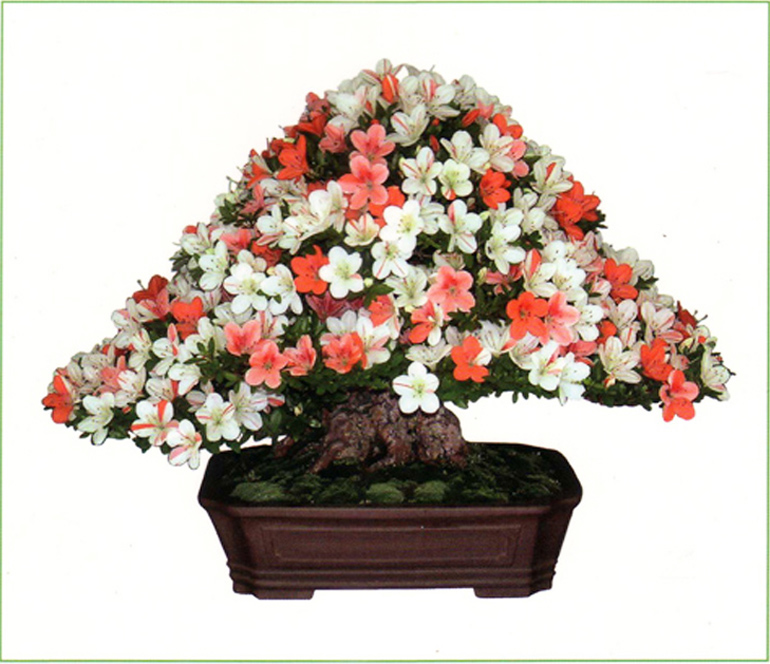 Ramification is not just about deciduous trees. A lot of skilled pinching and pruning is behind this Satsuki azalea's wild profusion of flowers. The photo, which we featured in another
Ramification is not just about deciduous trees. A lot of skilled pinching and pruning is behind this Satsuki azalea's wild profusion of flowers. The photo, which we featured in another